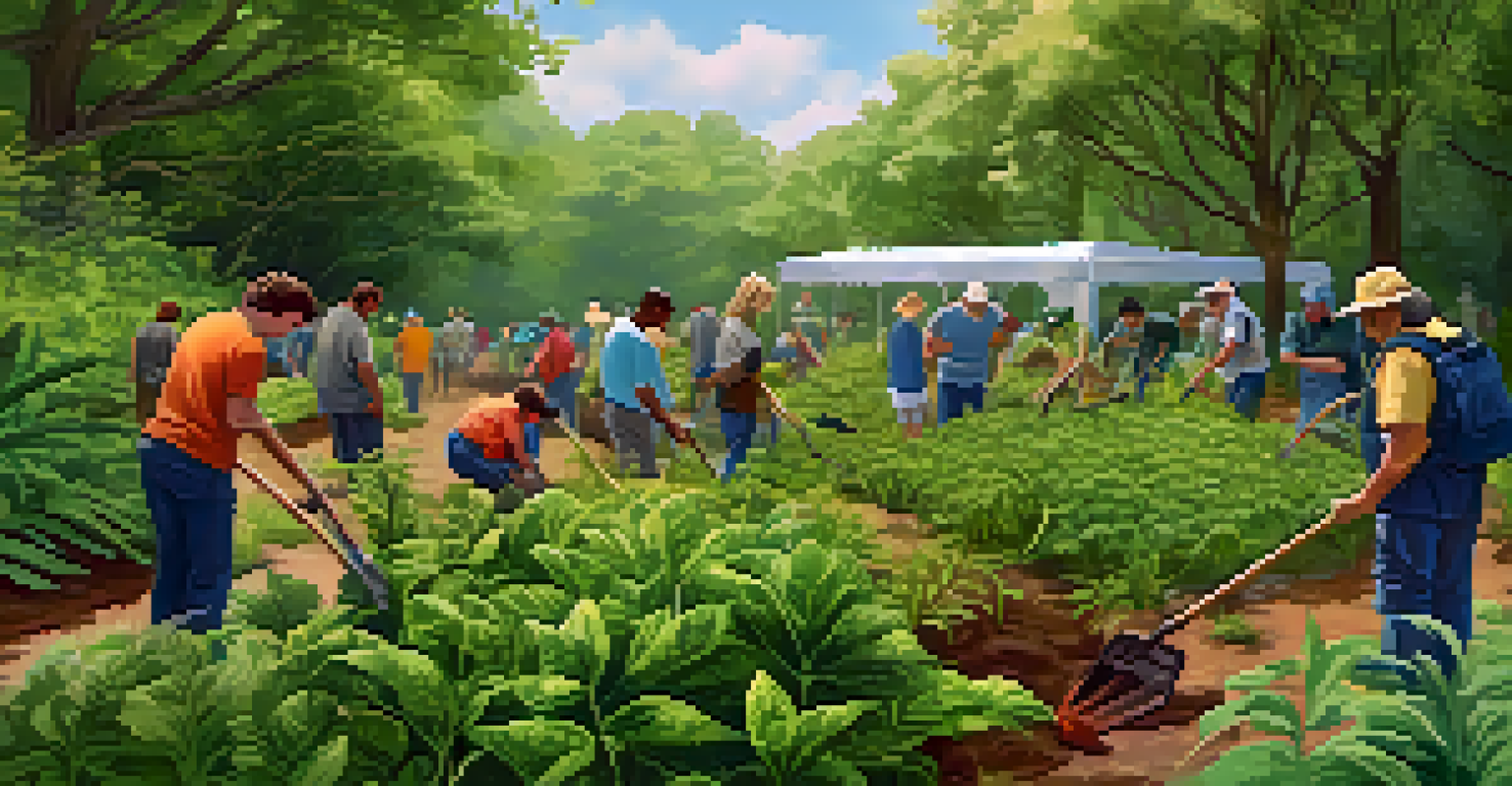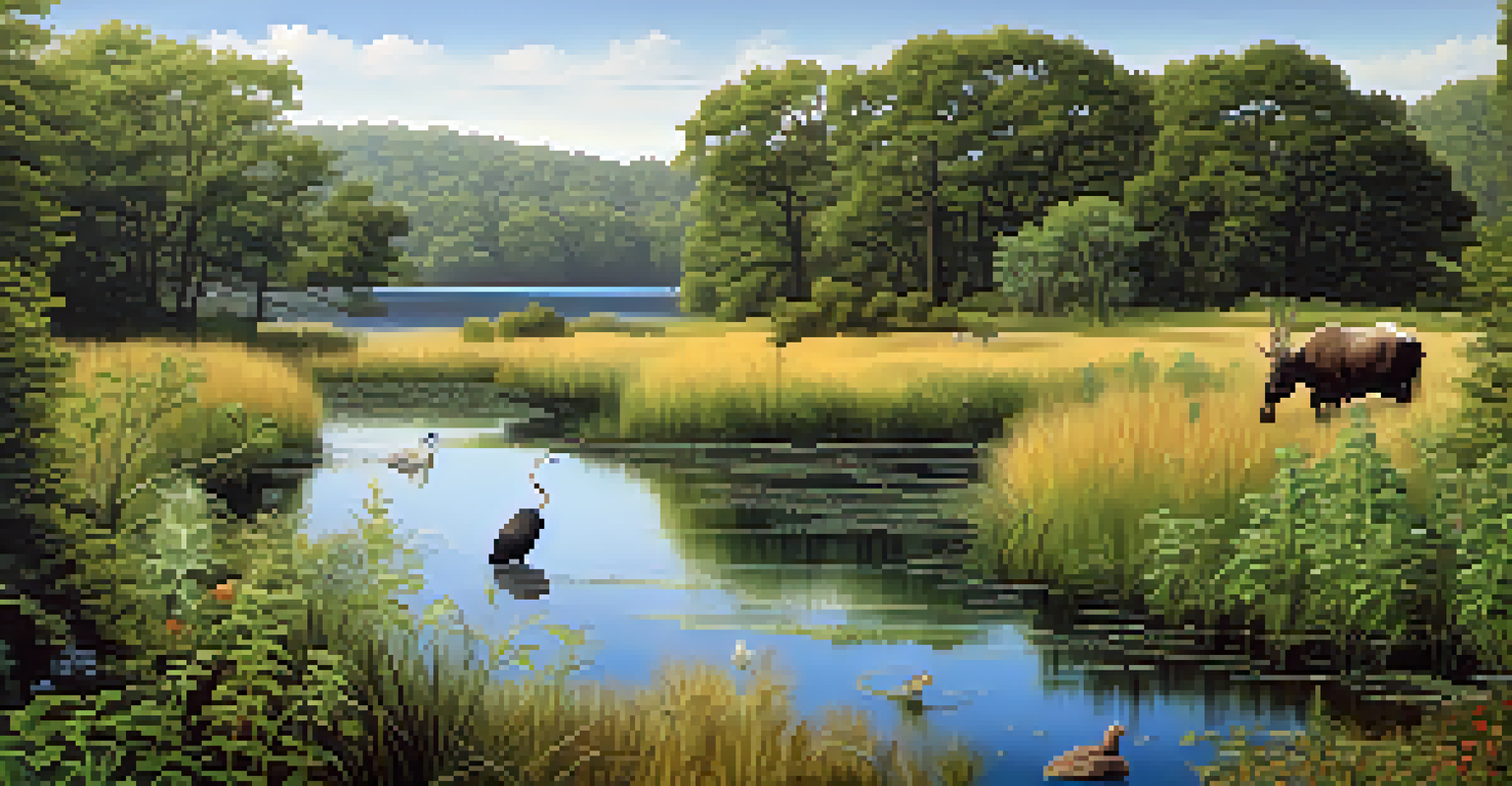The Impact of Invasive Plant Species on Local Ecosystems

What Are Invasive Plant Species and Why Do They Matter?
Invasive plant species are non-native plants that spread aggressively, often disrupting local ecosystems. They can outcompete native plants for resources like sunlight, water, and nutrients, which can lead to a decrease in biodiversity. Just as a guest at a party who won't leave can disrupt the fun, invasive plants can take over habitats, pushing out the locals.
Invasive species are those that are introduced to a new environment and cause harm to the ecosystem, economy, or human health.
The introduction of these species often occurs through human activities, such as gardening or agriculture, where non-native plants are brought in without considering their potential impact. Once established, they can proliferate rapidly, making management efforts challenging. This phenomenon is akin to introducing a new competitor into a sport; over time, they dominate the field, leaving little room for the original players.
Understanding the characteristics of invasive plants is crucial for prevention and management. By recognizing the traits that allow them to thrive, we can make informed decisions to protect our local ecosystems. It’s not just about preserving beauty; it’s about maintaining balance.
How Invasive Species Disrupt Local Flora and Fauna
Invasive plants can significantly alter the composition of local flora, often leading to monocultures, where a single species dominates. This shift can have cascading effects on local fauna, as native animals depend on diverse plant species for food and habitat. Imagine a buffet where everything is suddenly replaced with just one dish; diners would leave unsatisfied, just like animals struggling to find their preferred food sources.

The loss of native plants not only impacts herbivores but also affects the entire food web. Predators that rely on these herbivores may find themselves with fewer meal options, leading to a decline in their populations. This interdependence highlights how every species plays a role, and disrupting one can lead to an unraveling of the entire system.
Invasive Plants Threaten Biodiversity
Invasive plant species aggressively outcompete native flora, leading to reduced biodiversity and disrupted ecosystems.
Furthermore, invasive species can introduce new diseases that affect native plants and animals. This additional pressure can weaken ecosystems, making them more vulnerable to other stressors like climate change. It's a harsh reminder of how interconnected our natural world is.
The Role of Human Activity in the Spread of Invasive Species
Human activities, such as global trade and travel, play a significant role in the introduction of invasive plant species to new areas. Many invasive species hitch rides on cargo ships, in soil, or even in the ornamental plants we buy for our gardens. It’s like inviting a friend over without realizing they’ve brought along an uninvited guest that will soon take over your living room.
The greatest threat to our planet is the belief that someone else will save it.
Agricultural practices also contribute to the spread of these species, as crops can inadvertently harbor invasive seeds. Once these seeds are in the environment, they can quickly establish themselves and begin to crowd out local flora. Understanding these pathways helps us identify how we can reduce the risk of invasives taking hold.
Education and awareness are crucial in combating the spread of invasive species. By informing the public about the potential dangers of planting non-native species, we can encourage more responsible gardening choices. It’s all about creating a culture of mindfulness toward our environment.
Economic Impact of Invasive Plant Species
The economic consequences of invasive plant species can be substantial, affecting agriculture, forestry, and tourism. For instance, invasive plants can reduce crop yields by outcompeting native crops for resources. This loss not only impacts farmers’ profits but can also lead to increased food prices for consumers, creating a ripple effect through the economy.
Moreover, the cost of managing invasive species adds up quickly for governments and organizations tasked with controlling their spread. This includes expenses related to eradication efforts, monitoring, and restoration of affected habitats. It’s similar to a leaking roof; if not addressed promptly, the costs of repairs can skyrocket.
Human Activity Fuels Invasions
Human actions, such as global trade and gardening, significantly contribute to the introduction and spread of invasive species.
Tourism can also take a hit, especially in areas known for their natural beauty. If invasive species dominate, they can diminish the aesthetic appeal of landscapes, discouraging visitors. Protecting local ecosystems is not just about preserving nature; it’s also about safeguarding livelihoods.
Case Studies: Invasive Species in Action
One of the most notorious examples of invasive plant species is the kudzu vine in the southeastern United States. Originally introduced for erosion control, kudzu quickly overgrew trees and structures, earning it the nickname 'the vine that ate the South.' This illustrates how even well-intentioned introductions can have unintended consequences, transforming landscapes and ecosystems in the process.
Another case is the water hyacinth, which clogs waterways and disrupts local fisheries. Its rapid growth can block sunlight, leading to oxygen depletion in the water, which harms fish populations. This situation serves as a reminder of how one species can tip the balance in an entire ecosystem, impacting both biodiversity and local economies.
These examples highlight the importance of vigilance and proactive management. By studying past invasions, we can learn valuable lessons about prevention and control, ensuring we don’t repeat the same mistakes in the future.
Strategies for Managing Invasive Plant Species
Managing invasive plant species requires a multi-faceted approach that includes prevention, control, and restoration. Prevention is the first line of defense, emphasizing the importance of informed planting choices and public awareness campaigns. Think of it as locking the front door to keep unwanted guests out; it’s far easier than dealing with the mess after they’ve entered.
When invasives are already established, various control methods can be employed. These may include mechanical removal, chemical treatments, or biological controls, such as introducing natural predators. Each method has its pros and cons, and often a combination is necessary to effectively manage populations without harming native species.
Community Action is Essential
Engaging local communities in conservation efforts can enhance the management of invasive species and protect native ecosystems.
Restoration efforts aim to reintroduce native plants to areas affected by invasives. This can help restore balance and promote biodiversity. Just like rebuilding a community after a storm, it takes time and effort, but the results can lead to healthier ecosystems and a more resilient environment.
The Importance of Community Involvement in Conservation
Community involvement is crucial for effective invasive species management. Local volunteers can help with monitoring, removal efforts, and educational outreach, creating a sense of ownership and responsibility toward their environment. It’s like a neighborhood watch for nature; when everyone contributes, the impact is magnified.
Engaging communities also fosters a deeper connection to local ecosystems, promoting appreciation for native flora and fauna. Workshops, community gardens, and educational events can empower individuals to make informed choices about their landscaping practices. These efforts can transform individuals into passionate advocates for conservation.

Ultimately, when communities unite to address the challenges posed by invasive species, they not only protect their local ecosystems but also enhance their own quality of life. A healthy environment benefits everyone, and collective action can lead to meaningful change.